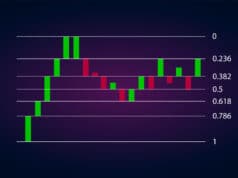In order to make informed decisions, Forex traders need to be aware of the numerous macroeconomic variables and news items and releases that influence the market. For long-term success, it’s important for traders to know which data to look out for as well as what they mean and how to trade it.
The United States remains the most powerful country in the world. The US dollar is still regarded as a reserve currency by many countries as a result of this dominance,
As a result, the dollar is involved in nearly all foreign exchange operations, making US economic news and data vital to follow. However, the significance of an event may shift in light of constantly-changing global trends.
When it comes to interest rate decisions, for example, it may seem like no one cares at all at one point in time, while it can be all that matters at another time.
Below is a look at five of the most important macroeconomic movers of forex trading.
Consumer Price Index (CPI)
The Consumer Price Index (CPI) is the most commonly used measure of inflation among the numerous economic indicators. Using the index, consumers can see how much they’ve paid in the past for a basket of market products, as well as how much more or less they’re paying now.
For central banks, this release serves as a useful tool for determining interest rates and other policies. Economic policymakers often use interest rate rises in order to combat rising inflation. When CPI data influences the raising of interest rates, it leads to the strengthening of the concerned currency and vice versa.
Interest rate decisions
Despite the importance of all Central Bank meetings, the Federal Open Market Committee (FOMC) meeting of the US Federal Reserve takes precedence because of the USD’s status as the world’s reserve currency.
In order to set interest rates, the world’s Central Banks meet once a month. They must choose between keeping rates the same, raising rates, or lowering rates. As a result, this choice has a significant impact on the value of the economy’s currency.
Rate increases are generally considered bullish for the currency, whereas rate decreases are generally seen as negative for the currency. However, there are times when the rates are left unchanged, in which case the market can either interpret it as bullish or bearish for a currency, depending on the current economic perspective.
Members of the FOMC committee in the US vote at each meeting, with “Hawkish” members in favor of raising interest rates and “Dovish” members in favor of decreasing them, respectively.
For traders, the Committee’s statements are closely studied, and even seemingly minor words can have a significant impact on markets, as demonstrated by the Fed’s use of and then elimination of certain phrases in relation to interest rate rises.
US Nonfarm Payrolls (NFP) data
The first Friday of each month sees the release of this indicator, which is considered one of the most crucial reports for many forex traders. The Bureau of Labor Statistics (BLS) releases the US NFP in tandem with the Employment Situation Report; therefore, this report carries a lot of weight. Another factor is that employment levels and the business cycle are tightly tied together.
NFP fluctuations have historically tracked closely with quarterly GDP changes. Hence they can be used as a form of GDP proxy. Since NFP is released monthly, they differ from GDP in that GDP is released only quarterly and generally with a delay.
Traders love this data for another reason: it has a significant impact on monetary policy, making it difficult to ignore. The Federal Reserve has a dual mandate: to maintain stable prices and to come up with policies that promote the creation of jobs. Data on employment has a significant impact on market perceptions and monetary policy expectations in general.
Gross Domestic Product (GDP)
A country’s overall economic health can be gauged by looking at its Gross Domestic Product (GDP). In reality, the impact of this report on the Forex market is minimal because by the time it is released, most of its components have already been made public, allowing for more realistic expectations. But it is vital to keep in mind that this information can still have a big impact on the market even if it is released in the middle of the trading day.
Generally, currency values rise when GDP exceeds expectations, and the values decrease when GDP falls below expectations. Currency traders pay great attention to the announcement of this data and use it as a cautionary indicator of future Central Bank actions. As a Forex trader, you need to keep an eye on the GDP since it tells you where the economy stands in relation to other countries and thus affects their currency strengths.
Purchasing Managers Index (PMI)
Production, new orders, inventories, supplier deliveries, and employment conditions are all included in the purchasing managers’ index (PMI), a measure of the health of the economy in the manufacturing sector. People like analysts and purchasing managers will benefit from this report because it provides them with information about the current state of affairs in the corporate sector.
Institute of Supply Management (ISM) generates monthly reports based on information acquired from surveys issued to roughly 300 companies. PMI values above 50 signal growth in the manufacturing sector, whereas readings below 50 indicate contraction in the sector.
Active Forex traders should pay close attention to the PMI, which is sometimes called the ISM index. This is because a rise in the PMI indicates that the economy is on a growth path, while a decline in PMI shows potential economic contraction. When the PMI reading exceeds expectations, the local currency strengthens and vice versa.
Risks of trading news
Positions built on news releases can be held for a long time, which might lead to a higher level of risk and stress. It’s possible that your trading positions will remain open for several days after the announcement of the news. You may have to pay additional holding expenses if you decide to take this route. Because of this, traders should make sure they have enough money to meet such expenses.
In summary
You should always use an economic calendar to keep track of economic releases, no matter what kind of trader you are. Traders can greatly enhance their trading strategy by incorporating economic announcements into their setups instead of purely trading based on technical considerations.




